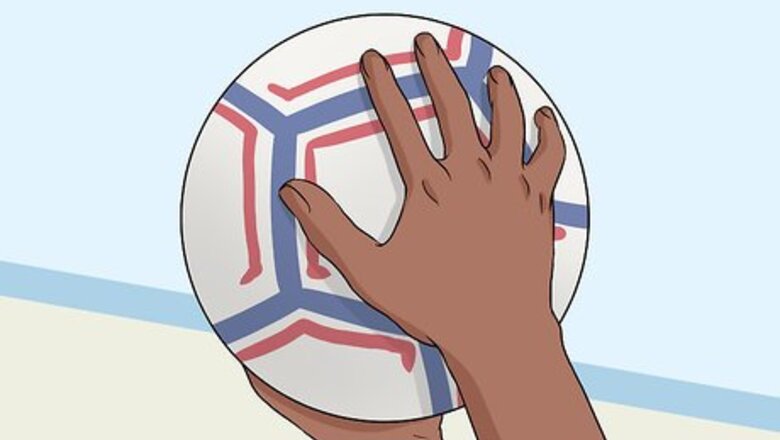
views
- Always stretch before you start practicing a flip throw, as this will help prevent injuries.
- Make sure you can do a handspring and hold a handstand for 3 seconds before attempting to do a flip throw, as these are essential for the famous trick.
- Hold a soccer ball firmly in your hands while doing a handspring to do a flip throw. When your feet touch the ground, release the ball.
Performing a Flip Throw

Get a good grip on the soccer ball. A flip throw generates a lot of force, so you want to make sure you have a strong, two-handed grip on the ball before you start to perform one. A weak grip could cause the ball to fall out of your hands or be released too early in the motion. Consider wearing gloves to increase your grip on the ball.
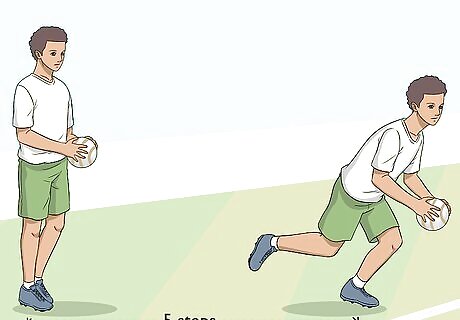
Take a running start. A flip throw needs a lot of momentum to be done correctly. Give yourself enough room to get about a 5 step running start to generate the momentum needed to make the flip throw more powerful and easier to perform. In a match, take about 5 steps back from the sideline. If you're practicing your flip throw, choose a fixed stopping point so you can get used to stopping at the sideline in a match.
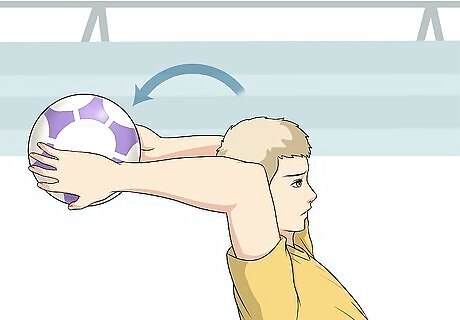
Bring the soccer ball behind your head. A flip throw still must follow the rules of a throw-in, so the ball must travel from behind and over your head to be legal. As you take your running start, bring the ball up and back behind your head with both hands. If you start your flip throw from your forehead or in front of your head, the referee may call a penalty.
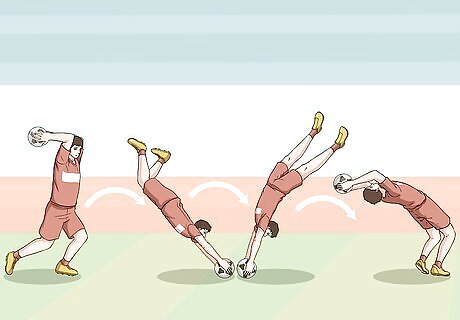
Do a front handspring while you hold the ball. After you've brought the ball behind your head and are finishing your running start, place the ball on the ground with your arms straight. Then kick your legs up and push off of the ball to launch yourself forward to land on both feet. Arch your back slightly to make the flip forward easier.

Release the ball as your feet make contact with the ground. When both of your feet touch the ground, let the ball launch forward by loosening your grip and flicking your wrists to release it. Land evenly on both feet and stand up straight once you've released the ball. Start slowly and build up your speed as you get more comfortable throwing the ball. Practice on level ground or on the soccer field.Tip: Work on the timing of your release to perfect your aim and improve your power.
Practicing & Warming Up

Stretch well before you practice. A flip throw takes a lot of coordination and uses a lot of your muscles to perform, so before you attempt one, you need to warm up and stretch properly. Stretch your legs, arms, shoulders, neck, and back. Warm up with some light calisthenics before you stretch.
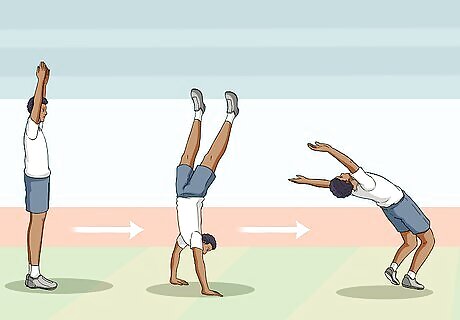
Practice handsprings to improve your technique. A flip throw is essentially a front handspring with a soccer ball, so practicing a front handspring is a great way to prepare to do a flip throw. Jog a few steps, raise your arms straight up in the air, and plant your hands on the ground. Then kick your legs up, and push yourself forward to land on your feet. Practice on level ground. Try to land on your feet as softly as you can to maintain control. Start slow and work to build up the speed of your front handspring.
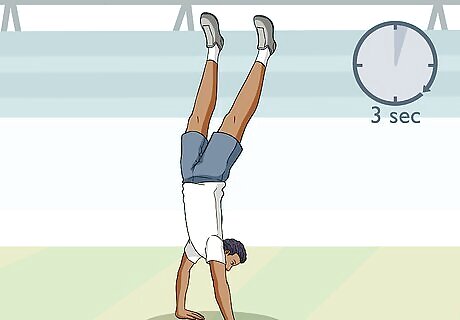
Hold a handstand for 3 seconds to improve your balance. Practicing a handstand is a great way to improve the balance and control needed to perform a flip throw well. Start standing up straight with your feet shoulder-width apart. Step forward with your dominant leg, plant your hands on the ground, lift your dominant leg, then bring your other leg up to meet it. Try practicing against a wall to hold yourself in the upright position. A flip throw utilizes many of the muscles that are involved in performing a handstand.
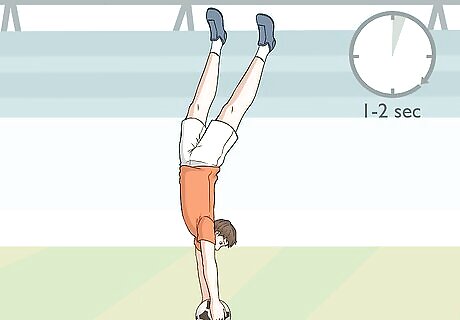
Practice doing a handstand while holding a soccer ball. Get a good grip with both hands on a soccer ball and try to hold a handstand for 1-2 seconds while you hold the soccer ball. Lower yourself with control from the handstand so your feet don't slam on the ground. Keep your arms locked out at your elbows for added stability.
Using the Flip Throw in a Match
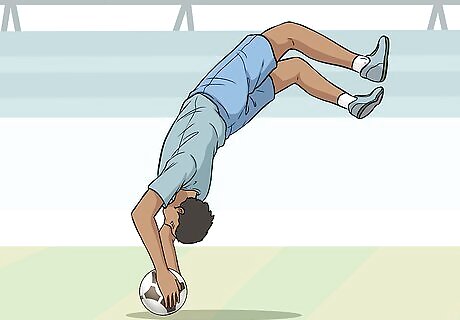
Try a flip throw in a match only when you're confident you can do it. In a live match, you shouldn't try a flip throw if you're not experienced doing it because it's easy for things to go wrong and you don't want to give your opponent the ball because of a botched flip throw. A poorly performed flip throw could also result in an injury.
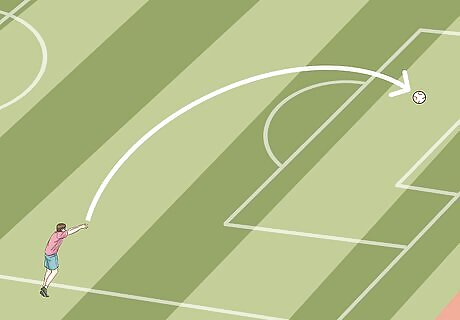
Use a flip throw to place the ball within scoring range. A flip throw is mostly used in the attacking third of the field and is a great way to put the ball within striking range of your opponent's goal. Aim to place the ball near the opponent's goal so one of your teammates can take a shot. The power of a flip throw allows you to send the ball a greater distance than a standard throw-in.
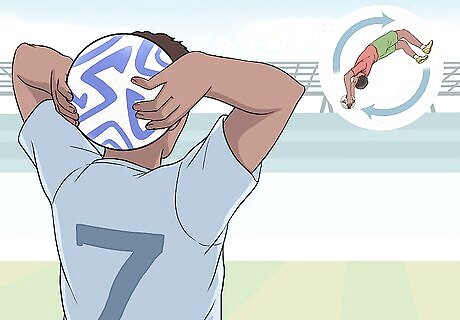
Surprise your opponent by using a flip throw. You can fool the other team by pretending to perform a normal throw-in, and then change to a flip throw at the last moment. But make sure your teammates know that you're going to do a flip throw! Be sure to bring the ball back behind your head before you do your flip throw.Tip: Don't throw the ball to a player past the last defender or you could easily receive a penalty for offsides.















Comments
0 comment